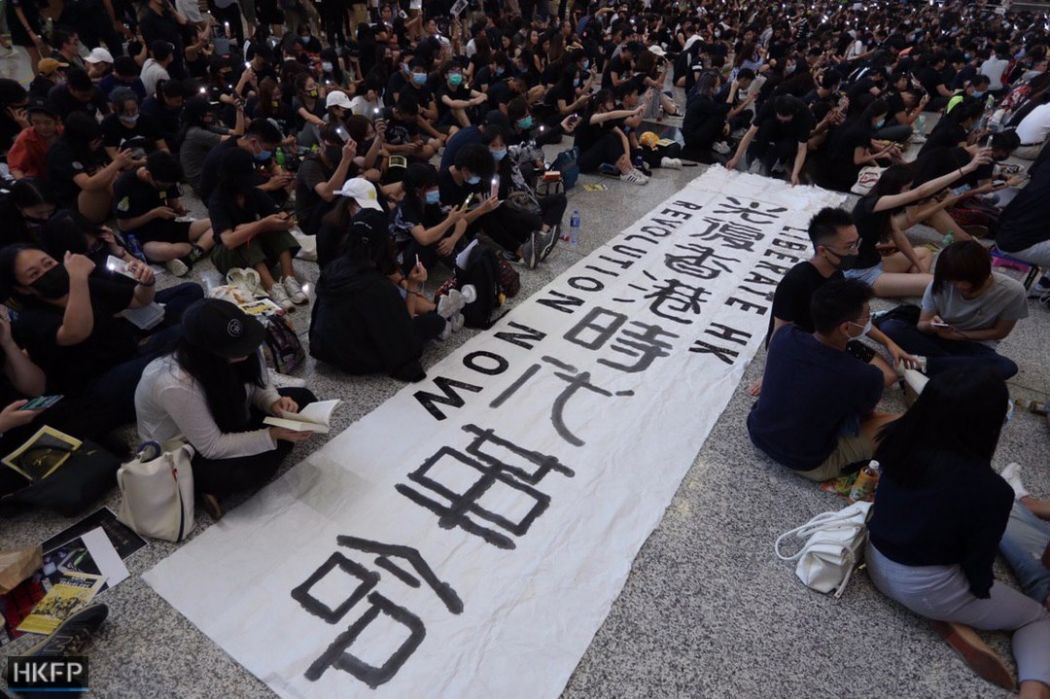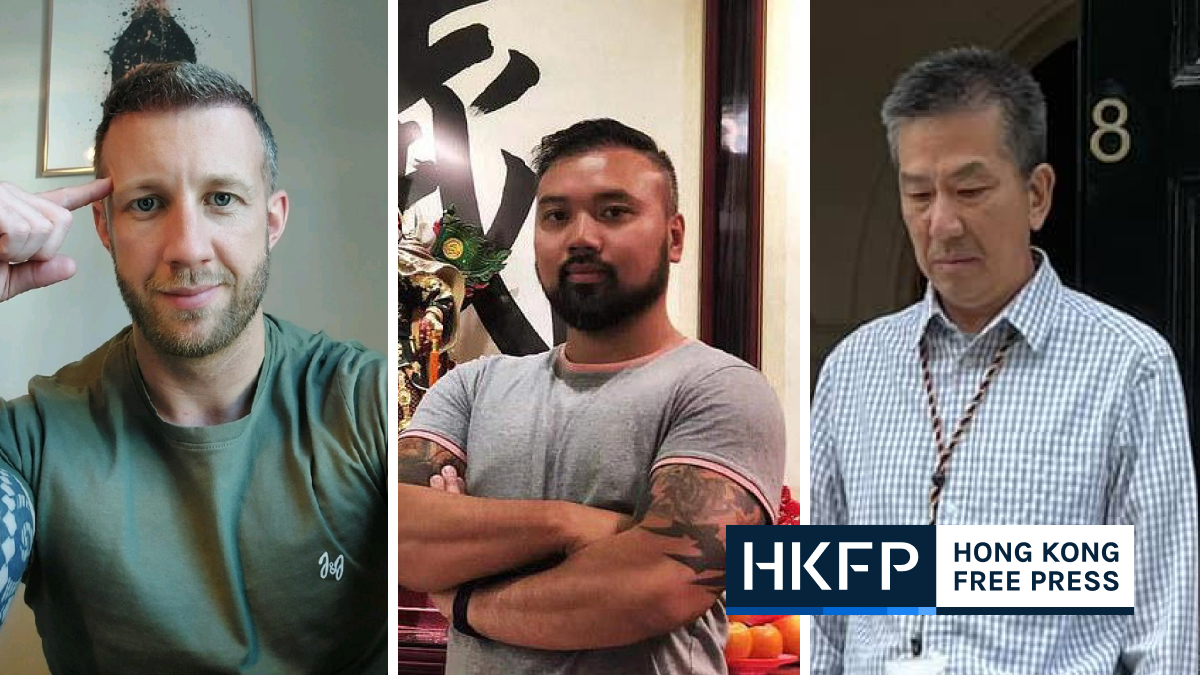By Joachim Boittout, originally published in 2019.
Enunciated, inscribed on banners, spray-painted and chanted—it is hard to avoid the slogan that has sparked the lightning strikes of power in the streets of Hong Kong since this June: “Liberate Hong Kong, the revolution of our times!” (Guangfu Xianggang, shidaigeming in Mandarin, or Gwongfuk Hoenggong, sidoi gaakming in Cantonese).
Crafted in 2016 by Edward Leung Tin-kei, the helmsman of the local Hong Kong Indigenous movement, these eight characters conjured anxiety and anger from local authorities and Beijing. The slogan was officially denounced by Carrie Lam, the Chief Executive of Hong Kong, on August 5 and was the target of fierce critiques from official media outlets such as the Global Times, whose attack was published under the signature of its chief editorialist Hu Xijin.

Accused of promoting the overthrowing of the One Country, Two Systems constitutional principle under which Hong Kong is now ruled, this slogan has become the focal point of official criticism in recent months. The official understanding of the slogan’s keywords does not seem to be shared by the majority of the population; complete emancipation of the territory is cited as an aim by very few protesters, as revealed by a number of surveys conducted by Hong Kong media on its meaning.
However, the historical meaning of the wording cannot go unnoticed and deserves further investigation, as it connects Hong Kong’s democratic aspirations to the history of the early Republic of China (Zhonghua minguo).
The “Liberate Hong Kong, revolution of our times!” slogan is undoubtedly rooted in Republican China’s (1911-1949) intellectual heritage. Indeed, the terms “liberate” (guangfu, meaning literally restoring the light) and “revolution” (geming) summon a political heritage stemming from the 1911 Chinese revolution, also known as the Xinhai Revolution.
Ending the Manchu Qing dynasty (1644-1911) without shedding much blood, the 1911 Revolution led to the establishment of the Chinese Republic, 10 years before the founding of the Chinese Communist Party (CCP) in 1921. Interestingly enough, Beijing has recently been trying hard to dismiss early Republican history in favour of post-1949 and CCP-centered historical narratives.

Guangfu was first used by one of the three major revolutionary organisations opposing the Qing regime, the Restoration Society (Guangfuhui), founded in Shanghai in 1904. More generally, it was widely used by the revolutionaries of the Revolutionary Alliance (Tongmenghui), the ancestor of the Kuomintang (Nationalist Party). The Alliance was founded in Tokyo in 1905 to pursue the overthrow of the Qing regime.
In 1945, this term was used for the association of Taiwan to the Chinese Republic (Taiwan guangfu) following Japan’s surrender after occupying the island since 1895. More recently, it was frequently employed in Taiwan in the 1950-60s in the Nationalist Party’s propaganda that was meant to prepare for the “reclaiming of the mainland” (guangfu dalu).
Referring to guangfu in order to designate their enterprise as to defend political freedom and to restore morality in local government, the protesters frame their claims in the ideologies of 1911. The reference to 1911 democratic ideals is even more telling in this slogan as the British colony often served as a refuge for anti-Qing intellectuals and activists during the formative phase of the Chinese revolutionary movement.
A relatively safe harbour for the revolutionaries, it was in Hong Kong that many uprisings on the mainland were prepared, such as those of Canton in 1895 and 1911.

Sun Yat-sen, the first President of the Republic of China (1912), stayed in Hong Kong for long periods between 1884, when he started school, and the Revolution in 1911. And after the 1895 founding of an important local branch of the first Chinese revolutionary organisation, the Revive China Society (Xingzhonghui), Hong Kong also welcomed the first revolutionary newspaper, the China Daily (Zhongguoribao), founded in 1900.
Therefore, it doesn’t come as a surprise that protesters symbolically enrolled Sun by equipping his sculpture in the HKU campus with their typical mask and helmet. Even more striking was the kickboard they put into his hands, on which was written the first four words of the slogan: “Liberate Hong Kong.”
By asserting their demands from Hong Kong – and through a Republican revolutionary tradition contradictory to the Communist revolutionary orthodoxy – the protesters are rediscovering a page of Chinese history rather unwelcome in mainland China, all in order to struggle against the regime.
Allied under an open slogan recalling a Republican intellectual legacy, the protesters align their claims to the history of the construction of Chinese democracy. By doing so, they reassert the singular place Hong Kong occupied in the process that ultimately led to the 1912 establishment of the Republic of China.
Joachim Boittout is a PhD candidate at the School of Advanced Studies in Social Sciences–EHESS –in Paris, France, working on the intellectual history of Modern China. He is also a lecturer at the National Institute for Oriental Languages and Civilisations in Paris.
Support HKFP | Policies & Ethics | Error/typo? | Contact Us | Newsletter | Transparency & Annual Report | Apps
Help safeguard press freedom & keep HKFP free for all readers by supporting our team
























